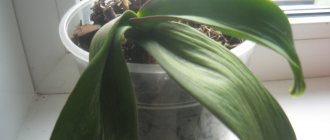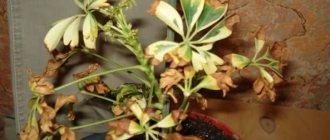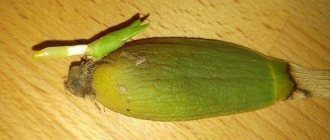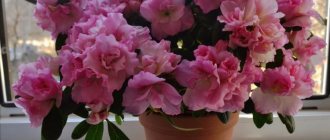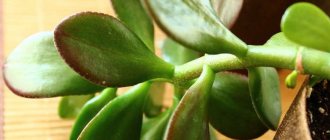Orchids are plants that are a wonderful decoration for houses, flower beds and greenhouses. For more than a century they have delighted flower growers with their beauty, grace, splendor and elegance of flowering. Unfortunately, sometimes it happens that the leaves of an orchid fall off and no longer grow. In general, this is not fatal, because the plant, being an epiphyte, feeds mainly from the root system. However, the leaf blade is involved in photosynthesis, which is also very important for the health and beauty of the flower.
In this article we will talk about why orchid leaves fall.
Natural process
The orchid as a tropical flower (genus Phalaenopsis) has many varieties and each differs not only in appearance or color of buds, but also in its life cycle. The latter, with an eye to climatic conditions, involves shedding leaves.
That is, if the greenery of your orchid suddenly begins to fall off, then it is possible that the primary source of the problem is its life cycle . Some species shed their leaves within a year after purchase, while others lose their leaves after 3-5 years.
All your efforts in terms of increasing/decreasing temperature, frequency of watering and applying fertilizers will not give any significant results. You just need to accept it and wait for the flower to form new leaves. If the gardener closely monitors the orchid, then he also tracks the age of the foliage.
Important! Before purchasing a plant, be sure to check with the seller for the exact name of the species and how often it sheds greens.
If an orchid begins to shed its leaves at the moment of rapid growth, then this is abnormal. During this period, greenery is necessary for the flower for complete photosynthesis, oxygen saturation and evaporation of excess moisture. So here we have an exacerbation of one or even several of the problems described below.
Illness or natural dormancy
Many species belonging to the Orchid family experience a period of dormancy with a certain periodicity. If in the homeland of a flower, for example, in January-February, weather conditions are unfavorable for the growth and development of the species, then even if kept indoors, the flower goes into hibernation.
If the orchid has dropped its leaves for natural reasons, then there is no need to change the conditions: neither fertilizing nor increasing lighting will help bring the plant out of the dormant period.
If the leaf plates fall off during the active growth of the flower, when it especially needs useful substances, it is worth carefully analyzing the care and determining why the orchid’s leaves are falling off.
Watering
Under no circumstances should you oversaturate the soil with moisture: the roots will begin to rot and the leaves will fall off. But the lack of fluid also has an extremely negative effect on the condition of the root and aerial parts. If a flower experiences a moisture deficiency, then soon all the leaves of the orchid will fall off . The greenery will try with all its might to retain water, and evaporation will stop working altogether.
You need to water your orchid regularly and without fanaticism, and not just when you remember that you have it. Here it would also be useful to clarify the subspecies: both moisture-loving types of orchids and “drier” types are found on sale.
Important! Make sure that the soil is slightly moist at a depth of 2-3 cm and do not allow the soil to dry out, compact or fall off.
It is best to water an ordinary orchid with boiled water at room temperature. This will slow down the development of functional chlorosis. Cold liquid can cause the roots to freeze, and all the leaves of the orchid will fall off again. If the plant is moisture-loving, then you can periodically give it a warm shower using a spray bottle. To prevent moisture from stagnating in the pot, be sure to provide drainage holes.
If you flooded the flower and brought it to rotting roots, then the soil must be replaced. The orchid is carefully removed from the pot and completely cleared of soil. Using garden tools, it is necessary to remove not only rotted roots, but also those areas on which a slimy coating has appeared.
Ideally, the cuts should be rubbed with activated carbon, then the plant should be placed in new soil and left alone for several days. After rehabilitation, the first watering is carried out no earlier than 4-5 days later.
Improper care
Newcomers are usually afraid of making the wrong move, which will lead to the death of the culture.
But don’t be afraid, in fact, care is not very difficult. The main thing is to follow the recommendations and not touch the pot with a flowering plant unless absolutely necessary. Phalaenopsis really does not like familiarity and frequent moving from one windowsill to another.
There are several reasons for this phenomenon; if it is not possible to immediately determine the source, then you will have to use the method of elimination, scrupulously checking all points of care, paying attention to changes in the condition of the flower.
Temperature
It is very important for supporting long-term flowering or stimulating the flower to form a peduncle. Comfortable heat level is kept between 22-26 °C. If the flower is healthy, but does not even think about blooming, it is transferred to a cooler place with a temperature no higher than 16-18 and kept for at least 2 weeks.
Such a shock drop will lead to activation of processes in the roots, and watering with a solution of succinic acid stimulates growth and the beginning of flowering.
Lighting
The health of the orchid largely depends on its level.
- It quickly reacts to the lack of sunlight by shedding the bulk of its leaves.
- A direct stream of light will cause burns to the leaf plate. The leaf will die or be sick for a long time.
The best option is to place the flower on a south-facing window with the glass covered.
Diffusing tulle or blinds are often used. If there is insufficient lighting, you will have to install phytolamps. Their choice is quite wide, while achieving an interesting decorative effect that decorates the room.
The plant will survive violations of the watering regime, humidity or soil composition; a lack of light is detrimental to it.
Dry air
Monitor air humidity
The orchid feels good at a humidity level of 60-70%, which is unacceptable for residents of an apartment or private house. In greenhouses, automatic microclimate maintenance systems are installed; at home, you will have to be content with daily spraying from a spray bottle with warm, settled water.
The flower loves the shower, but then it needs to be left in the bathroom until the leaves dry naturally. Microscopic droplets on the plates cause sunburn.
When the air is too dry, the orchid sheds its leaves to reduce moisture loss; when indicators acceptable for it are restored, new leaves begin to form.
Watering
All types of orchids are epiphytes, receiving water not from the soil, but from the environment. Therefore, watering in the usual sense of the word is not carried out for them. Overmoistening of the roots leads to their rotting, and contact with a leaf rosette provokes the shedding of buds and yellowing of the leaves.
To avoid negative consequences, it is worth adopting a very convenient method. When the earthen ball dries out, the pot is simply placed in a pan of water for several hours. Through the holes in the bottom, the flower itself will take as much as it needs.
Sometimes overhead watering is carried out, but in a very thin stream and along the inner wall of the pot.
Fertilizers
For feeding, complex liquid or granular preparations for cacti and orchids are used. Agricola and Good Power have proven themselves very well.
It is worth focusing on the following features:
- in spring, attention is paid to nitrogen as part of complex fertilizing;
- in summer, the frequency of fertilizing is 2 times a month;
- when the first bud appears, root feeding is stopped completely;
- during flowering, only foliar support is carried out by spraying on the leaves;
- During the dormant period, fertilizers are not applied.
Lighting
Another reason for the falling of flower leaves is lack of lighting. The orchid is extremely demanding of diffused sunlight. In the summer months there are no problems with this due to longer days, while in winter the plant suffers from a lack of light.
During this period, the flower needs an additional source of photosynthesis. It is best to organize artificial additional lighting with special LED lamps. The latter work in the yellow or white color range. Red, blue or green shades are not allowed here.
Separately, it is worth mentioning direct sunlight. They can also cause leaf drop. In its usual habitat, which is the tropics or subtropics, the orchid receives diffused light. Direct sunlight can cause severe burns. The leaves turn yellow, after which they simply die.
Important! If you take the plant out onto the loggia in the summer, be sure to cover it with gauze or a mosquito net. This way you will protect the orchid leaves from burns.
So the quality of light must be kept under control. Scattered rays can be organized using blinds or tulle curtains.
Fertilizers
Incorrectly selected fertilizers can cause problems with leaves. The answer to the problematic question lies at the purchase stage. Sellers, for the sake of rapid growth, as well as acceleration of sales, oversaturate the soil with nutrients and strong stimulants.
The plant quickly grows tall and acquires extensive foliage. But this approach also has a downside. After some time, the flower begins to wither from excess feeding, because it has exhausted all its resources for the formation of the above-ground part. And as a result, even seemingly healthy green leaves begin to fall off.
To normalize the condition of the orchid, it is necessary to place it as close as possible to the light source and completely abandon artificial fertilizers. After about a couple of weeks, you can begin to fertilize the soil with liquid fertilizers rich in nitrogen elements.
Important! Never oversaturate the soil with nitrogen fertilizers. This will delay the onset of flowering and make it more difficult to transport water and nutrients to the root.
The mirror problem is the lack of fertilizers . If the leaves of a flower begin to turn yellow and fall off, this indicates a potassium deficiency. In this case, mineral fertilizing cannot be excluded, but on the contrary, provide the orchid with fertilizers rich in iron and potassium. It would also be a good idea to completely renew the soil.
Orchid root is especially sensitive to elements such as nitrogen, potassium and phosphorus. If you dose them incorrectly, leaf fall will become a natural phenomenon. The root will receive a chemical burn and will no longer normally absorb nutrients from the soil. As soon as a couple of green leaves have fallen, you need to reconsider the scheme for applying mineral fertilizers.
Diagnosis of the lesion
Orchid disease is determined by changes in the color of the leaves and the condition of the flower. Correct and timely diagnosis of the disease will help you choose the right treatment method, which means there will be a chance to save your favorite plant.
Table: external signs of orchid diseases
| Symptoms | Care errors | Disease | Pest |
|
| Brown bacterial spot | Phytopathogenic bacterium |
|
| Fusarium rot | Fungi of the genus Fusarium |
|
| Anthracnose | Colletotrichum orbiculare mushroom |
|
| Black rot | Fungus Aspergillus Niger |
| greenhouse effect: high temperature (over 25°C) and high air humidity | Powdery mildew | Powdery mildew mushrooms (Erysiphales) |
|
| Gray rot | Botrytis mushroom |
| weakened immunity or excess nitrogen fertilizers | — | Shchitovka |
|
| — | Spider mite |
| the virus enters through gardening tools or from another infected plant | Viral disease | Viruses ORSV, CYMMV, CACV, etc. |
| red spots with brown specks form on the lower part of the leaves |
| Rust | Rust mushroom |
| dry air | — | Thrips |
| dry air | — | Mealybug |
| high air humidity | Root rot | Fungi Rhizoctonia, Pythium and Phytophthora |
Priming
If an orchid drops its leaves, then one of the reasons may be improperly selected soil. Caked or overly compacted soil can cause roots to rot or dry out. If you get a flower with improperly formed soil, the plant needs to be replanted.
For novice gardeners, there is a huge selection of soil in specialized stores specifically for orchids. Experts prefer to prepare the soil for their flowers themselves.
Approximate composition of a good substrate:
- expanded clay;
- pine bark;
- White sand;
- sphagnum moss;
- perlite;
- fern;
- pumice.
Important! To organize a drainage layer (3-5 cm), only expanded clay and pumice are used.
You can change the percentage of ingredients depending on the subspecies of the flower.
How do you know if a dried orchid can be saved?
The orchid was designed by nature with a large margin of safety. If leaves are damaged or missing, then their function - photosynthesis - is fully taken over by the roots. Therefore, you cannot plant an orchid in an opaque pot or in soil!
If the roots have rotted, but there are at least a couple of leaves, then the plant will take food from the air through the stomata of the leaf blades and direct its forces to the development of roots.
Note! If your poor thing has at least one healthy root or one or two healthy leaves, then it is possible to save it!
If, instead of a pet, you see dry roots and a stump, then the likelihood of resuscitating the orchid is low, but it’s still worth a try! After all, you will always have time to throw away the unfortunate plant.
Temperature
All types of orchids can be divided into three temperature groups - warm, moderate and cold. A good half of the subspecies belong to the last two. An indicator of an incorrectly chosen temperature regime is precisely the falling leaves of an orchid.
“Warm” species prefer temperatures around +15-18⁰С. In this case, daily fluctuations should not exceed 5⁰C. For example, if at night the temperature drops to +18⁰С, and during the day rises to +25⁰С, then the flower may get sick.
Important! Check with the seller which temperature group the flower belongs to. It is better to avoid purchasing “warm” subspecies that are picky about the quality of the microclimate. It is very difficult to create ideal conditions for them.
Orchids of the moderate group feel great at +12-22 degrees and no longer react so critically to daily fluctuations. “Cold” species can easily withstand minimum temperatures up to +7⁰С and maximum temperatures up to +22. Daily fluctuations are also treated stoically.
Dry air
In order to maintain optimal temperature conditions, many place orchids near heating devices and central heating radiators. This is a mistake, because as a result of such proximity the air dries out, leaving the orchid without leaves.
The fact is that water evaporates not only from the soil, but also from the greenery itself. The plant loses moisture and the leaves begin to gradually die. The answer to this problem is to periodically spray the orchid with water at room temperature from a spray bottle.
Moist moss placed near the flowerpot also helps. It is able to concentrate moisture in itself and share it with other plants. The main thing here is not to overdo it, otherwise fungus may appear.
Compatible with other colors
The death of leaves on an orchid can be caused by neighboring plants. The flower is not particularly picky about its fellows, but still cannot tolerate some representatives of the flora in principle. Therefore, it is better to keep her as far away from them as possible.
Plants incompatible with orchids:
- Yucca.
- Araucaria.
- Cactus.
- Peperomia.
- Cordilina.
Here it is important not just to move or rearrange the orchid a little further from the above plants, but to separate them radically - by rooms or completely abandon one of the flowers.
What other parts of the plant are affected?
When leaves fall, the entire plant suffers. It directly depends on the processes of photosynthesis, so if the cause is not determined, this will lead to irreparable consequences (read about what leaf diseases occur in orchids here).
What you should pay attention to
If the leaves begin to wither and fall off closer to the base of the peduncle, then this may be normal. Here we have the normal aging process. There is nothing you can do about this and there is no need to worry about it: the issue will resolve itself.
Examine the leaflet carefully. If the base that was attached to the stem is rotten, then it is necessary to check the roots, and at the same time the soil moisture. This condition of the leaves indicates waterlogging of the soil.
Lumps or plaque on the greens indicate a fungal infection. It appears either from the same excess moisture or from neighboring plants. To minimize the consequences, it is necessary to reduce soil moisture levels and use fungicides.
When the leaves become covered with multi-colored spots and then begin to fall off, this indicates that the flower has been infected by a virus. Treatment must be carried out immediately, otherwise the orchid will die in the shortest possible time. Fortunately, there are plenty of effective and inexpensive preparations specifically for orchids in flower shops.
If the rhizome and stem have received serious damage from the virus, then there is no point in saving such a flower. You will only waste your money on medications. It is much more practical to reproduce the old one or even buy a new one. Let us consider separately the root system of the orchid with an eye to our problem.
Reviews
I bought an Orchid!!! A dream come true. Now I’m studying special literature on care, because I’m afraid of losing it. Thanks for the article, very informative. I received answers to all my questions.
When visiting a flower shop, I always admired the Orchids. I couldn’t take my eyes off their elegant beauty, but I didn’t dare buy one for myself, I was afraid that I couldn’t handle it, because I always considered the flower to be very problematic. My family, knowing about my desire, gave me 4 pots of Orchids of different colors for my anniversary. My joy knows no bounds. All with flowers for now. Every morning I communicate as with living beings and love them very much.
I advise all grandmothers, when their grandchildren are far away, to start growing orchids out of loneliness. You have no idea how they changed my life. Constantly demanding attention and care, they distract from sad thoughts. You look at life in a new way, vigor and meaning appear in what you do. True, the price is a little expensive, but the beauty on the windowsill is worth it.
Green root
If the orchid has completely lost its foliage, but the root has not withered and remains green, then there is still a chance to revive the flower. In this case, photosynthesis and moisture saturation stop, but the plant still lives. By promptly identifying the cause, successful rehabilitation can be achieved.
A healthy rhizome indicates that the flower can still feed itself through the soil. Nitrogen supplements and fertilizing help here. It is undesirable to use strong growth stimulants. An adult plant survives any diseases noticeably better. Nutrients have already accumulated in its stems and roots, while in young orchids with a weak root system and a modest above-ground part, the problems are much more acute.
Withered root
If the flower has lost all its greenery, and the root has withered, then you need to seriously think about replacing it: resuscitation will be very problematic, and the chances of success are minimal. The fact is that a dried out root system indicates the impossibility of self-feeding. The plant simply will not be able to grow foliage and stems, no matter how you fertilize it.
It is also not possible to propagate a dying flower. You can try to inspect the root collar. If you see small green buds on it, then the chances of resuscitation increase slightly. Otherwise, trying to restore the flower is meaningless.
To restore an orchid, you need a special fertilizer with a high nitrogen content, which must be combined with strong growth stimulants. The latter significantly speed up the resuscitation process and within a day the result will be visible. But again, the chances that an orchid will recover with a dried root system are extremely small.
